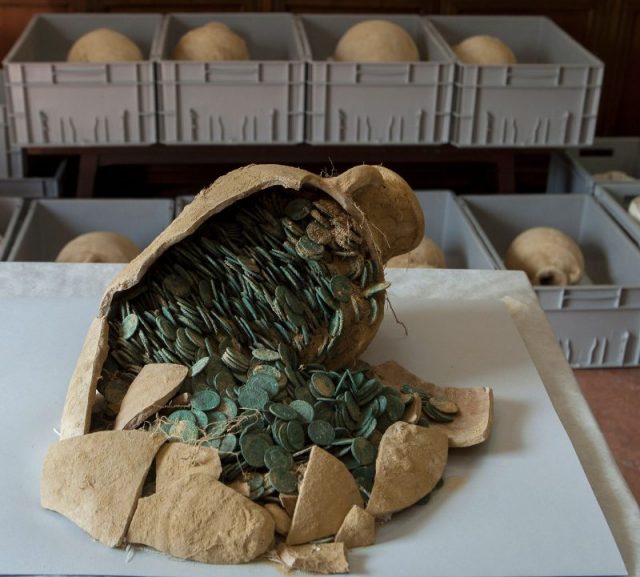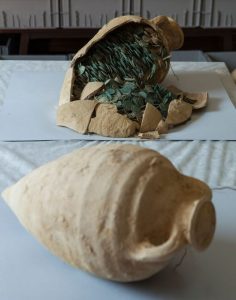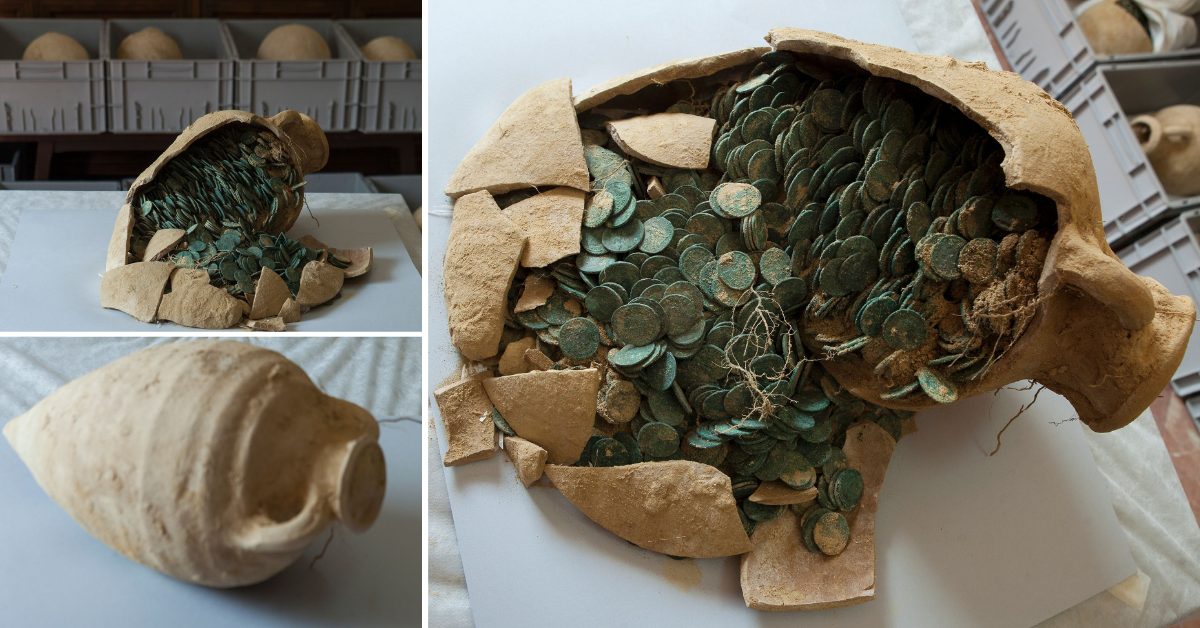How many rare Roman coins does it take to weigh in at 600 kilos, or more than 1,300 pounds?
A lot. An awful lot. That’s how many were found in a rare coin trove in Spain, in the town of Tomares in 2016, when workers were digging trenches for power cables to be installed in an Andalusian park called Zaudin Park. Machinery signaled that something beneath the ground, a couple of feet below the surface, was foreign matter, so the crew stopped work and called in experts.
The Spanish trove is the largest such find to be discovered
In situations such as this, archaeologists decide what protocols must be followed, and so it was in this instance. Remarkably, they discovered 19 amphorae, or jugs, each one filled to the brim with Roman coins from the 4th century. Not only was the size of the trove remarkable; the coins are “fleur de coin,” or perfect, in coin expert’s parlance, proving they had never been in circulation.

At the time, archaeologists theorized that the cache had been part of an enormous tax payment for the Roman Empire, or was, alternatively, intended as payment for soldiers and other armed forces personnel.
Once collected, the coins were sent to the Archaeology Museum of Seville for cleaning and proper examination. Ana Navarro, head of the museum, said to the media that year, “What is incredible is a discovery of this size… they [couldn’t] be moved by one person alone because [the jugs] weigh so much, due to the coins inside.” The amphorae were designed and produced to carry and move wine, or perhaps grains of some sort.
The discovery was certainly the most unique ever made in Spain. Some speculated then, and now, that the trove is possibly the world’s largest collection of perfect bronze coins ever found.
Ten of the amphorae were damaged during their retrieval that day, but the remainder were in excellent condition. Once the archaeologists were satisfied that they had recovered everything, workers were able to get back to the business of digging ditches and prepping them for the power cables. The entire procedure took just one day.

The coins bear the likeness of a Roman emperor on one side and a number of Roman allegories on the other. For example, one had a drawing indicating abundance — sheaves of grain — and other “snapshots” of Roman life.
Questions remain about why this treasure trove was buried in the first place
Although experts are quite confident in their hypothesis about the coins’ origins as tax monies or pay for the army, they are less sure of why they were buried as they were. They were completely hidden underground and, were it not for the accident of the crew’s appearance to do their job that morning, the coins may have remained hidden for many more centuries.
Were they stolen and then buried? Did the thief die before he, or they, could retrieve their ill-gotten gains? Or is there some other, more innocent explanation?
Archaeologists may never know for certain.
One thing that is for sure is that, while the discovery in Spain was incredible, it is far from the only trove of Roman coins discovered in Europe and the U.K. While not precisely common, it is far less unusual than one might imagine, because the Roman Empire was so vast and thrived for so long.
More from us: 2,000-Year-Old Bronze Mirrors Found in Ancient Cemetery
In fact, in Britain, laws exist that allow discoverers of rare coins to keep part of their value. This encourages folks to turn in their finds to museums and government officials, so they can be stored safely and properly, for history’s sake.
Now, the discovery in Spain is where it should be, and it can be viewed — and appreciated — by everyone at the Archaeology Museum in Seville.
